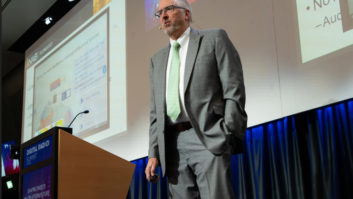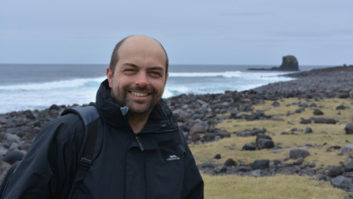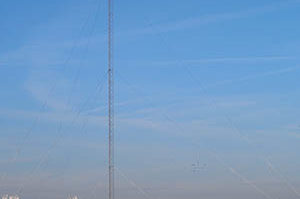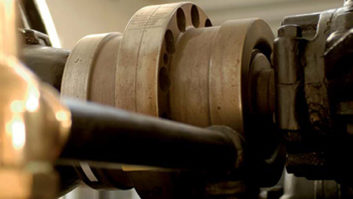WUMB(FM) at the University of Massachusetts in Boston has hosted what participants say are the first tests of satellite transport of HD Radio encoded audio with program-associated data. Ibiquity, Broadcast Electronics, and the Public Radio Satellite Services teamed up to demonstrate that point-to-multipoint Studio-to-Transmitter-Links are ready for digital radio.
The WUMB-FM public radio network operates five transmitter sites in Eastern Massachusetts, and applications for more are pending at the FCC. The cost of terrestrial point-to-point leased data circuits for WUMB’s STLs has reached break-even with the space-segment costs of a satellite distribution system, and funding has been acquired to purchase and install an uplink at the studio, and five downlinks at the transmitter sites, said participants.
But there was a problem.
“Using today’s standard satellite technology, we’d have to encode our STL audio using MPEG 2 at 128 kilobits per second to get through the satellite, and then re-code using the HD encoder at each transmitter,” says Grady Moates, chief engineer for WUMB. “While that might be acceptable if all of our source material is linear, close to 40% of our programming comes to us through the Public Radio Satellite, which adds a third coding. I am convinced that a single HD encoder at our studio, with satellite distribution of the HD signal, is the answer.”
Mike Kirk with PRSS research the issue and suggested a live test of the concept spanning half the continent using an off-the-shelf “satellite Ethernet modem” technology. Moates and Kirk designed the test to emulate a fully-digital broadcast of a live classical music NPR program, from the network all the way to the listener.
Kirk came to Boston for final assembly of the downlink equipment on Dec. 16. Moates said, “At first, it didn’t work. After about an hour of head-scratching, as well as a break to attend the WUMB staff holiday party, we called BE’s Dave Kroeger to get help with configuration of the IP addresses of the various components in the system. This worked.
The engineers said the tests show that HD + PAD can fit inside a standard 200 kHz digital SCPC channel on a satellite transponder, reducing distribution costs while improving audio quality through reduction of transcoding errors. In the 20 hours that the test was conducted, the modem counted zero data errors in the satellite link, they said.
Thanks to CPB funding, WUMB says it was the first public station in New England to broadcast with HD Radio. The Department of Commerce/PTFP is funding WUMB’s plans to build the up- and down-link sites in spring of 2005. WUMB expects to be on-the-air with HD Radio at its other four transmitters by summer.
Moates operates Loud & Clean Broadcast Science, and can be reached at (800) 946-7007, or on the Web at www.loudandclean.com.
HD Radio Transmission Via Satellite Tested
HD Radio Transmission Via Satellite Tested












